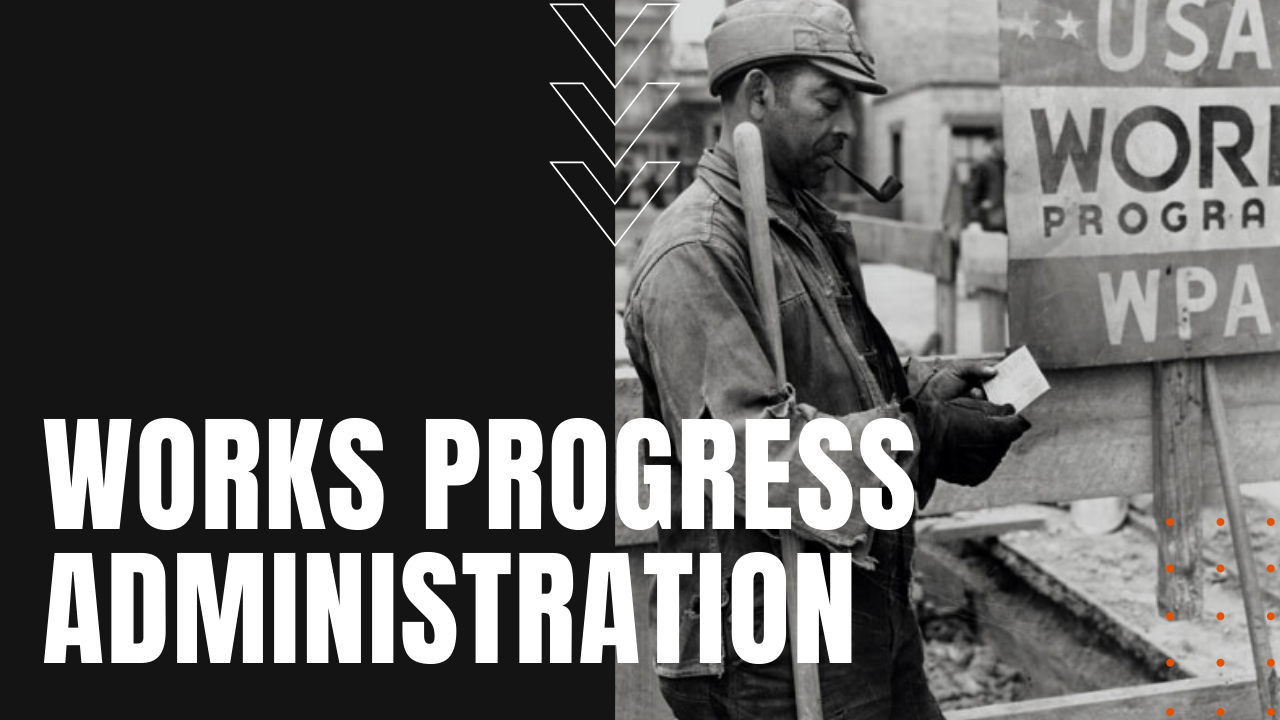Works Progress Administration (WPA)

What was the Works Progress Administration?
Created by executive order on May the 6th, 1935, President Franklin D. Roosevelt created the WPA—later renamed The Works Progress Administration in 1939—designed to employ Americans in the construction of infrastructure projects during the darkest days of the Great Depression.
Created at a time when a whopping 20 percent of American adults were out of work, by 1938, Roosevelt’s WPA employed some 3.3 million largely unskilled American men in the construction 4,000 new school buildings, 130 new hospitals, as well as the construction of 9,000 miles of storm drains and sewer lines.
The program also saw the construction of 29,000 bridges and 150 airports, while planting 24 million trees and paving or repairing 280,000 miles of roadway.
Federal Project Number One
Thanks to Elenor Roosevelt’s lobbying efforts aimed at her husband, the WPA also oversaw Federal Project Number One, or simply Federal One as it was known, which employed artists, musicians, actors and writers to further bolster the ranks of the employed, at the same time inspiring downtrodden Americans with the creation of hopeful artwork and performances amidst crippling economic uncertainty.
While critics saw Federal One as a waste of taxpayer dollars, Federal One consumed a mere $27 million dollars of the WPA’s lifetime expenditure of $5 billion, or approximately $95 billion in today’s currency. Federal One would also see the establishment of over 100 performing art centers in large and small American communities alike.
When FDR took office in 1933, he promised a “new deal” for every American, which later translated into the employment of 350,000 African Americans, or roughly 15 percent of all those employed by the WPA. While many politicians and union leaders criticized the WPA for gross inefficiencies and raging cost overruns—a chronic condition that added the word “Boondoggling” to the American lexicon—the WPA offered employment opportunities to millions of desperate Americans during the hardscrabble days of the Great Depression.
Its legacy of schools, roads, dams and bridges, many of which remain in use to this day, including such iconic structures as the Hoover Dam, the Library of Congress and the San Francisco mint. When weapons production began ramping up as the nation edged closer to entering World War Two, when employment dropped to a lowly two percent, FDR and the federal government began an operational slow down of WPA projects, eventually shuttering the program in June of 1943, making the WPA a vital lifeline during the darkest days of the worst hard time.
